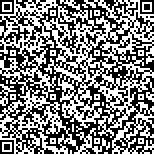| 引用本文: | 凌霄,张辉,李伟霞,唐进法,李春晓,王晓艳,李学林.豆浆对豆科中药吸收特性的影响及相关机制研究[J].中国现代应用药学,2021,38(15):1826-1836. |
| LING Xiao,ZHANG Hui,LI Weixia,TANG Jinfa,LI Chunxiao,WANG Xiaoyan,LI Xuelin.Study on the Effect of Soybean Milk on the Intestinal Absorption Characteristics of Legumes Traditional Chinese Medicine and Relevant Mechanism[J].Chin J Mod Appl Pharm(中国现代应用药学),2021,38(15):1826-1836. |
|
| |
|
|
| 本文已被:浏览 2078次 下载 1196次 |

码上扫一扫! |
|
|
| 豆浆对豆科中药吸收特性的影响及相关机制研究 |
|
凌霄1,2,3, 张辉1,2,3, 李伟霞1,2,3, 唐进法1,2,3, 李春晓1,2,3, 王晓艳1,2,3, 李学林1,2,3
|
|
1.河南中医药大学第一附属医院, 郑州 450000;2.中药临床评价技术河南省工程实验室, 郑州 450001;3.呼吸疾病中医药防治省部共建协同创新中心, 郑州 450001
|
|
| 摘要: |
| 目的 探讨中国特色饮食豆浆对豆科中药吸收的影响,指导临床用药期间合理饮食。方法 采用药动学研究豆浆对豆科中药葛根、黄芪、甘草和槐花中代表性功效成分(黄酮类)体内吸收的影响;在体肠灌流考察豆浆对功效成分肠吸收的影响及其随时间的变化规律;外翻肠囊法和酶抑制剂法考察P-gp和MRP2蛋白在此过程中的作用;UHPLC-QQQ-MS/MS检测血浆和肠液中葛根素、芦丁、甘草苷和刺芒柄花素的含量,计算各成分在大鼠药动学参数、各肠段的累计吸收量和吸收速率常数。结果 豆浆显著降低各功效成分在大鼠体内的AUC0-t,Cmax,豆浆和药液同时灌流可显著抑制4个功效成分在各肠段的吸收,预灌流豆浆2 h也显著抑制葛根素、刺芒柄花素、甘草苷的吸收,预灌流0.5 h和1 h再灌流药液对各功效成分吸收无显著影响。维拉帕米和丙磺舒对这4种成分的累计吸收量、吸收速率常数和表观渗透率无显著影响。结论 豆浆显著抑制了葛根、黄芪、甘草、槐花中黄酮类成分在大鼠体内的吸收转运,此作用可能和P-gp、MRP2无关,具体的作用机制仍需进一步研究。服用含豆科中药的药物时应避免同时服用大豆类食物。 |
| 关键词: 豆浆 食物药物相互作用 豆科中药 在体肠灌流 外翻肠囊法 UHPLC-MS/MS |
| DOI:10.13748/j.cnki.issn1007-7693.2021.15.006 |
| 分类号:R285.1 |
| 基金项目:河南省高等学校重点科研项目(19A360004);中国博士后科学基金项目(2019M652549);河南省中医药科学研究专项课题(2017JDZX039) |
|
| Study on the Effect of Soybean Milk on the Intestinal Absorption Characteristics of Legumes Traditional Chinese Medicine and Relevant Mechanism |
|
LING Xiao1,2,3, ZHANG Hui1,2,3, LI Weixia1,2,3, TANG Jinfa1,2,3, LI Chunxiao1,2,3, WANG Xiaoyan1,2,3, LI Xuelin1,2,3
|
|
1.The First Affiliated Hospital of Henan University of Chinese Medicine, Zhengzhou 450000, China;2.Henan Province Engineering Laboratory for Clinical Evaluation Technology of Chinese Medicine, Zhengzhou 450001, China;3.Collaborative Innovation Center for prevention and treatment of respiratory diseases, Zhengzhou 450001, China
|
| Abstract: |
| OBJECTIVE To determine the effect of Chinese dietary soybean milk on intestinal absorption of legume traditional Chinese medicine, and to guide the rational diet during clinical medication. METHODS Pharmacokinetics was used to study the effect of soybean milk on the absorption in vivo of the representative flavonoids of Puerariae lobatae radix, Astragali radix, Glycyrrhiza radix et rhizoma and Sophorae flos. In vivo inte stinal perfusion was used to study the effect of soybean milk on the absorption of the effective ingredients and its change rule with time. Eversion intestinal sac method and enzyme inhibitor method were used to study the effect of P-gp and MRP2 protein in this process. UHPLC-QQQ-MS/MS method was used to detect the contents of puerarin, rutin, glycyrrhizin and anthocyanin in plasma and intestinal fluid and the pharmacokinetic parameters, cumulative absorption capacity and absorption rate constant of each component in rats were calculated. RESULTS Soybean milk significantly reduced the AUC0-t, Cmax of the functional components in rats. The simultaneous perfusion of soybean milk and liquid medicine could significantly inhibit the absorption of the four functional components in each intestinal segment. The pre-perfusion of soybean milk for 2 h also significantly inhibited the absorption of puerarin, anthocyanin and glycyrrhizin. The pre-perfusion of 0.5 h and 1 h had no significant effect on the absorption of the functional components. Verapamil and probenecid had no significant effect on the cumulative absorption, absorption rate constant and apparent permeability of the four components. CONCLUSION Soybean milk significantly inhibit the absorption and transport of flavonoids from Puerariae lobatae radix, Astragali radix, Glycyrrhiza radix et rhizoma and Sophorae flos in rats in vivo, which may not be related to P-gp and MRP2. The specific mechanism of action needs further study. When taking drugs containing legumes, it is avoided to taking soybean milk at the same time. |
| Key words: soybean milk food-drug interaction legume traditional Chinese medicine intestinal perfusion in vivo everted gut sac UHPLC-MS/MS |
|
|
|
|
